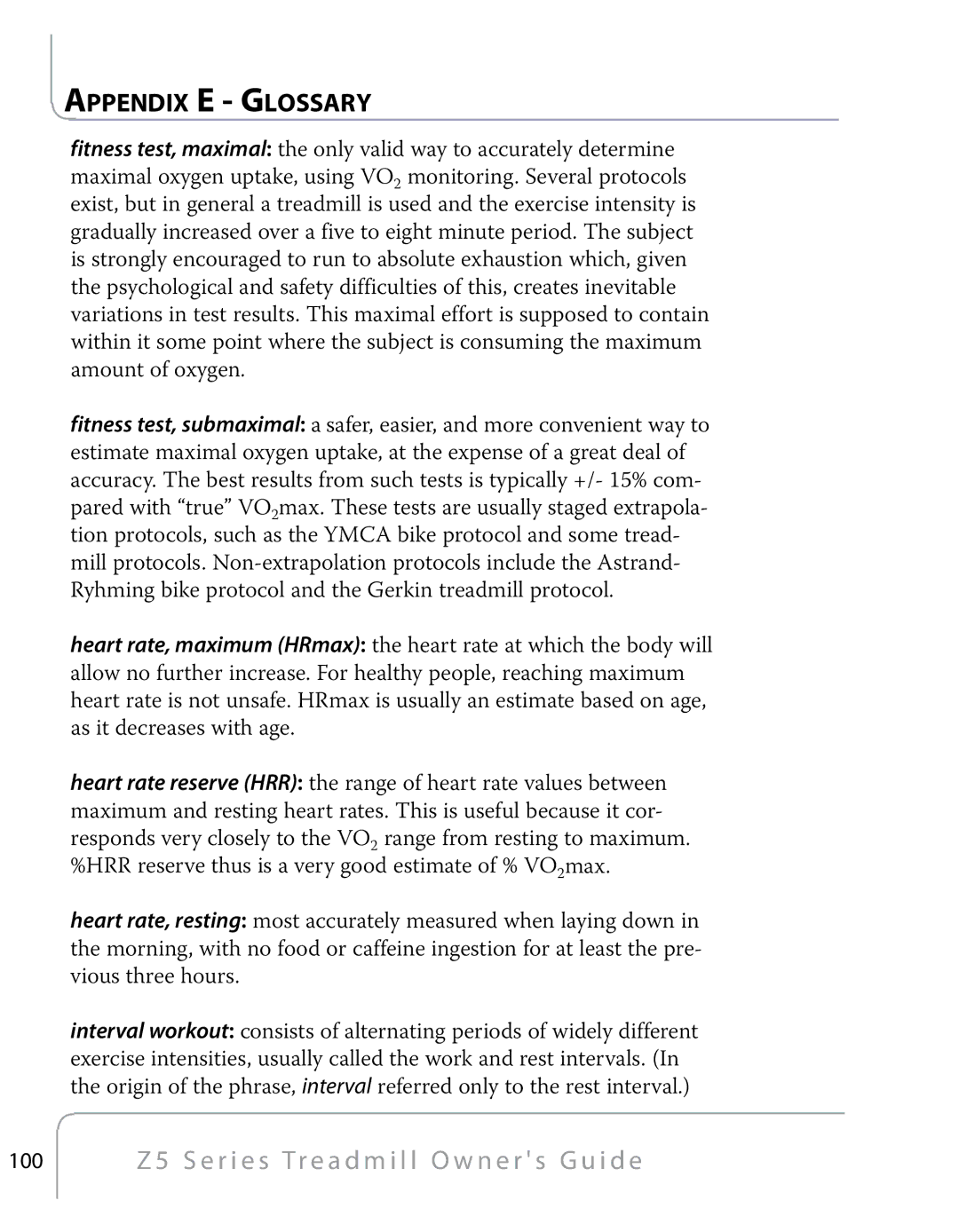
Appendix E - Glossary
fitness test, maximal: the only valid way to accurately determine maximal oxygen uptake, using VO2 monitoring. Several protocols exist, but in general a treadmill is used and the exercise intensity is gradually increased over a five to eight minute period. The subject is strongly encouraged to run to absolute exhaustion which, given the psychological and safety difficulties of this, creates inevitable variations in test results. This maximal effort is supposed to contain within it some point where the subject is consuming the maximum amount of oxygen.
fitness test, submaximal: a safer, easier, and more convenient way to estimate maximal oxygen uptake, at the expense of a great deal of accuracy. The best results from such tests is typically +/- 15% com- pared with “true” VO2max. These tests are usually staged extrapola- tion protocols, such as the YMCA bike protocol and some tread- mill protocols.
heart rate, maximum (HRmax): the heart rate at which the body will allow no further increase. For healthy people, reaching maximum heart rate is not unsafe. HRmax is usually an estimate based on age, as it decreases with age.
heart rate reserve (HRR): the range of heart rate values between maximum and resting heart rates. This is useful because it cor- responds very closely to the VO2 range from resting to maximum. %HRR reserve thus is a very good estimate of % VO2max.
heart rate, resting: the morning, with vious three hours.
most accurately measured when laying down in no food or caffeine ingestion for at least the pre-
interval workout: consists of alternating periods of widely different exercise intensities, usually called the work and rest intervals. (In the origin of the phrase, interval referred only to the rest interval.)
